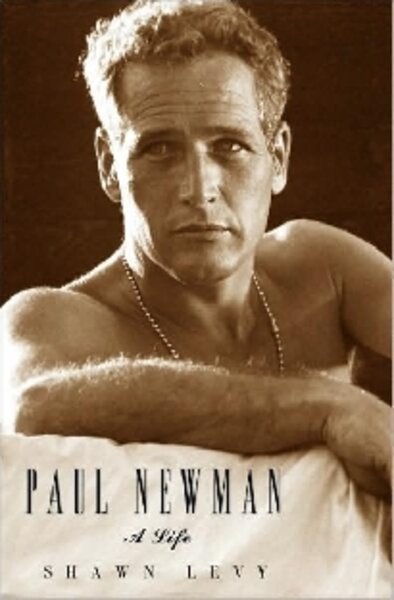Paul Newman: A Life
Loading...
I approached Paul Newman: A Life with trepidation. Prior to now, my enduring impression of the actor had been from a front-row view of a 2002 performance of “Our Town” at the Westport Country Playhouse. On stage, the Connecticut Yankee seemed every bit the graceful role model I’d always imagined.
But this new biography had already made headlines for its revelations about an extramarital affair and Newman’s constant drinking. I braced myself for a muckraking, myth-busting, heartbreaking read – the most ruinous critique of Newman since the reviews of his 1954 megaflop, “The Silver Chalice.”
Fortunately, “Paul Newman: A Life” by Shawn Levy is none of those things. (Well, it does excoriate “The Silver Chalice,” something Newman himself delighted in doing.) Levy, a film critic for The Oregonian, has penned an eloquent and perceptive eulogy that chronicles Newman’s journey from movie stardom to American icon.
It wasn’t preordained. Newman may have been born with a face that inspired the comic book “The Green Lantern,” but acting didn’t come easily. At least, not the kind of naturalistic performance espoused by the newfangled school of method acting at The Actors Studio in New York. The young actor, who’d taken to theater in college, set about studying the process of looking inward to draw emotions from past memories. But when it came to applying such techniques, he was no Marlon Brando. Or Joanne Woodward, for that matter.
Leveraging his insights as a film critic, Levy observes, “He could be caught out working his machinery deliberately in a number of films – stiffness and calculation somewhat limited even the best performances of his first decade or so in the movies.”
But it didn’t matter. Newman more than compensated with an innate presence and facial features that made one wonder whether his family lineage could be traced back to Mt. Olympus.
Levy shares numerous anecdotes about how women treated the star’s blue eyes as if they were a Smithsonian exhibit, constantly asking him to remove his sunglasses. No wonder Newman yearned to be a character actor. As such, he shied away from playing a romantic lead and gravitated toward characters with an antiauthoritarian streak, choices that allowed him to transition from the traditional fare of Hollywood’s golden age into edgier productions that appealed to the hippie generation..
“He fit in precisely with neither the Greatest Generation nor the Baby Boomers but represented instead a vital link in the American century – a band of men who were meant to inherit a system that was no longer reliably in place by the time their fathers willed it to them,” writes Levy. “Torn by the conflicting impulses to rule and rebel, his was arguably the pivotal generation of the twentieth century, and Newman, almost unconsciously, was its actor laureate.”
Bit by bit, Newman steadily improved as an actor. By his 40s, cinema’s very own Dorian Gray was able to mete out immensely popular hits – “Butch Cassidy and the Sundance Kid,” “The Sting,” and “The Towering Inferno” – in between a surprising number of duds. Eventually, though, the flops began to stack up and the star became bored with acting. Worse, Newman had to repair his marriage after a two-year affair and, later, he suffered the devastating loss of his son to drug abuse.
But Newman’s salad days were far from over – if anything, they were just beginning. Levy recounts the way Newman would always “mix a salad dressing from scratch” at restaurants using his own recipe. Eventually, the actor idly wondered about bottling the stuff and selling it. The biography offers up a fascinating narrative of how the Newman’s Own empire was born – as with all of Newman’s achievements, it wasn’t easy – and how his philanthropic instinct blossomed. At the same time, Newman’s love of motor racing came to the fore, and his perseverance eventually resulted in many congratulatory waves of the checkered flag.
All of these late experiences seemed to unconsciously bleed into Newman’s acting. There’s a noticeable difference between the actor who made 1963’s “Hud” and the one in 1994’s “The Hudsucker Proxy.” In films such as “The Verdict” and “Nobody’s Fool,” the mature Newman finally delivered the caliber of lived-in performances he’d always strived to achieve.
Levy’s meticulously researched biography is as revealing a portrait as one could hope for, given that he didn’t have access to Newman or his family. At times, Levy is hamstrung by his subject’s private nature. Why did Newman – so famous for his long-lasting marriage – stray from Woodward, and why did she forgive him?
None of our business, really. And Levy, thankfully, only seems interested in Newman’s private life in so far as it provides context for how it shaped him as a person and influenced his work. What emerges is a nonprurient, endearing portrait of a man who had little interest in living inside the Hollywood bubble – he lived in Connecticut, after all – which made him seem like a man of the people. By the time Levy details Newman’s last recorded words, you may find yourself blotting the ink on the final page.
Stephen Humphries is a former Monitor arts editor.






